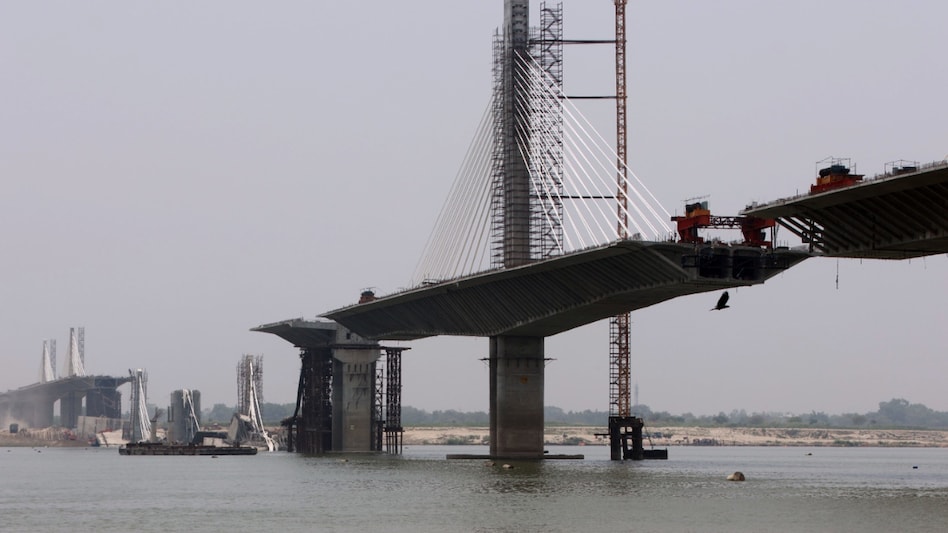 Already there are 12 major ports and over 200 non-major ports in the country, along the 7,500-km long coastline. Vadhavan Port in Maharashtra, which is under construction, would be the 13th major port in India
Already there are 12 major ports and over 200 non-major ports in the country, along the 7,500-km long coastline. Vadhavan Port in Maharashtra, which is under construction, would be the 13th major port in India Already there are 12 major ports and over 200 non-major ports in the country, along the 7,500-km long coastline. Vadhavan Port in Maharashtra, which is under construction, would be the 13th major port in India
Already there are 12 major ports and over 200 non-major ports in the country, along the 7,500-km long coastline. Vadhavan Port in Maharashtra, which is under construction, would be the 13th major port in IndiaIndia is envisaging a revolution of sorts in infrastructure sector in the next quarter of a century riding on Prime Minister Narendra Modi’s vision to make India a ‘Developed Nation’ by 2047.
By building sustainable and modern infrastructure that can match that of any developed country, particularly through advanced transportation networks, including roads, railways, ports, and airports, India intends to accomplish the overall goal of over 8% growth, in future.
The Central Government has launched Gati Shakti programme with a vision to bring under one umbrella, all the major mobility infrastructure projects of various ministries and state governments, such as Bharatmala (roads & highways), Sagarmala (a string of ports), inland waterways, dry/land ports and Ude Desh ka Aam Nagrik (UDAN) or a slew of regional airports enabling air travel access to a common man.
Already India has made a headway in building national highways in a big way connecting all passenger, trade and freight points. About 13,800 km of highways construction is envisaged with an outlay of Rs 2.81 lakh crore in 2023-24 alone, up 33% from a year ago.
Railway line to high altitude areas of Ladakh, railroad tunnel beneath the river Brahmaputra, Bullet Train project between Mumbai and Ahmedabad, Arunachal Frontier Highway and Mumbai Trans Harbour Link Bridge, are just a few ambitious projects that are on the anvil now. Besides, numerous hydroelectric dams, high speed trains, power projects, river navigation projects, solar power hubs, and metro rails projects are underway across the country.
Already there are 12 major ports and over 200 non-major ports in the country, along the 7,500-km long coastline. Vadhavan Port in Maharashtra, which is under construction, would be the 13th major port in India.
Ambitious Sagarmala project, intended to reduce logistics cost of trade through a string of ports across the coastline with minimal infrastructure investment, is expected to be completed much ahead of independent India turning 100.
The government plans to bring down the cost of logistics in the economy from an estimated 14% to 10% by adopting advanced mobility technologies, mainly to improve the country’s competitive edge in global manufacturing and trade, and for greater role in supply chains.
For ensuring successful delivery of high-quality infrastructure delivering social and economic value, and do not compromise on health, safety, environment, sustainability and governance (ESG) benchmarks, the risks should be properly assessed in advance, monitored and corrective actions be taken midway through. For this, all the technical and quality parameters of the project be studied even before the project is approved.
As many as 131 airports are in operation in India, of which 29 are international, 92 are domestic, and 10 Custom airports, while the government has granted in-principle approvals to 21 more greenfield airports in June 2023.
Even as the advanced economies are facing threats to their growth pace, India has already upped the ace by announcing an outlay of Rs 10 lakh crore (3.3% of GDP) for infrastructure in Budget 2023-24. It is supplemented by its loans to state governments, amounting to Rs 1.3 lakh crore, for their infrastructure investment.
Scale of development has also come on the radar of the government, which can be discerned from a total of 144 tunnelling projects with a length of 357 km costing ₹2 lakh crore that are underway on National Highways. Tunnels reduce the distance between different points drastically, resulting in deeply compressed travel timelines.
Though India’s project execution pace has improved during the last couple of decades, major rail and road accidents that occurred recently have brought the focus on to meticulous planning and quality of execution skills again, besides the legacy issues like land acquisition, funding and lack of latest technologies that are haunting us.
Funding large-scale and long gestation infrastructure projects is a major challenge, as it is difficult for the government alone to allocate sufficient resources, and banks and other institutions are constrained by asset-liability risks when they lend short-term funds to finance long-term projects.
Though the government has embarked on raising funds through Infrastructure Bonds, it has to find new and innovative instruments too, besides encouraging FDI. Already many infrastructure projects are implemented under Public-Private Partnership (PPP) mode.
Having spawned their activities across the country, and setting the pace for planning and execution of megaprojects over the last few decades, it is not difficult for the sector to adopt latest technologies like artificial intelligence, sensors, robotics and digital technologies, and excel in putting them to use. Ultimately, sooner or later the industry must take the destiny into their own hands and lead innovation to make a mark in this competitive world.
BT India @100: Decoding the Megatrends for Mission 2047. All the updates